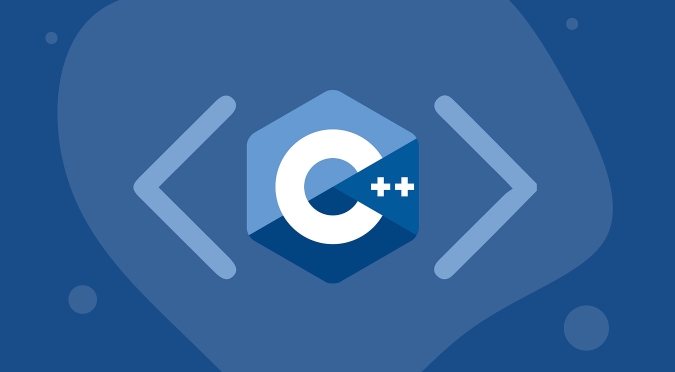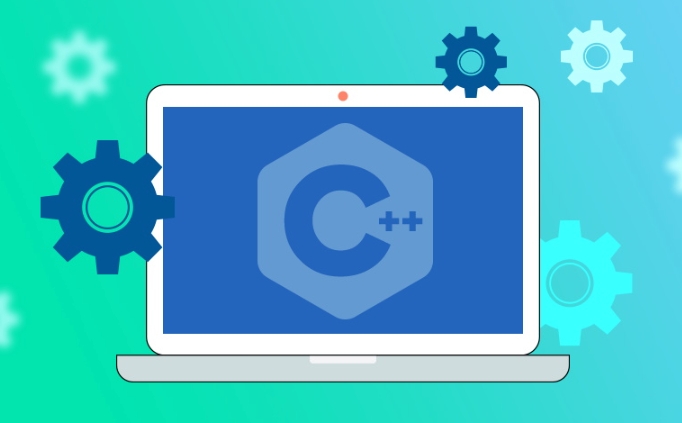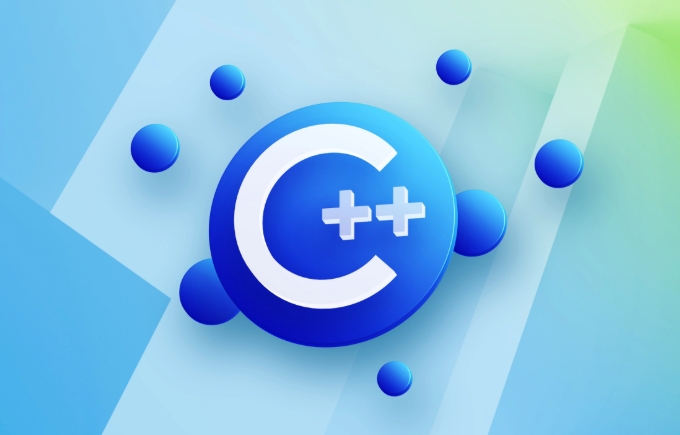Understanding move assignment operator in C
The move assignment operator in C is a special member function that efficiently transfers resources from a temporary object to an existing one. It is defined as MyClass& operator=(MyClass&& other) noexcept;, taking a non-const rvalue reference to allow modification of the source object. You should define it when managing resources manually, when default behavior is insufficient, or when needing exception safety. Unlike the copy assignment operator, which copies data, the move assignment operator "steals" resources, leaving the source in a valid but unspecified state. Best practices include checking for self-assignment, releasing existing resources, leaving the source destructible, marking the function noexcept, and following the Rule of Five. Forgetting to nullify pointers or mishandling resource cleanup can lead to errors like double deletion. When members support move semantics, delegating to their move assignment simplifies implementation.

In C , the move assignment operator is a special member function that handles resource transfer when an object is assigned from an rvalue (like a temporary or explicitly moved object). It's key to writing efficient code, especially when dealing with dynamic memory or other costly resources.

What is the move assignment operator?
The move assignment operator replaces the contents of an existing object by "stealing" resources from a temporary object. This avoids expensive deep copies and allows for optimizations like moving memory buffers instead of copying them.
Its typical signature looks like this:

MyClass& operator=(MyClass&& other) noexcept;
Unlike the copy assignment operator, which takes a const lvalue reference, the move assignment operator takes a non-const rvalue reference — indicating it can modify and “pillage” the source object.
This is important because in many cases, such as with std::vector, reallocations happen by moving elements rather than copying them, which significantly improves performance.

When should you define your own move assignment operator?
You should define your own move assignment operator if:
- Your class manages resources manually (e.g., raw pointers, file handles).
- The default behavior doesn’t do what you need.
- You want to ensure exception safety or specific cleanup logic during moves.
By default, C will generate a move assignment operator for you if no user-defined copy operations, move operations, or destructors are present.
For example:
class MyString {
char* data;
size_t length;
public:
// Define move assignment to handle 'data' properly
MyString& operator=(MyString&& other) noexcept {
if (this != &other) {
delete[] data; // Free current resource
data = other.data;
length = other.length;
other.data = nullptr; // Leave source in valid state
other.length = 0;
}
return *this;
}
};If you don't write one and your class contains members that have move semantics, the compiler-generated version will try to move each member — which might be exactly what you want.
How does it differ from the copy assignment operator?
The main difference lies in what they operate on and how they treat the source object:
- Copy assignment (
operator=(const MyClass&)) makes a deep copy of the source. - Move assignment steals resources from the source, leaving it in a valid but unspecified state.
For example, when using std::unique_ptr, you can’t copy it (because it’s non-copyable), but you can move it — transferring ownership of the managed pointer.
Another practical example: containers like std::vector use move assignment to efficiently resize when elements are moved instead of copied.
Also, move assignment usually sets the source object's internal pointers to nullptr or resets values, so destruction is safe and fast.
Best practices when implementing move assignment
Here are some key points to keep in mind:
- Always check for self-assignment (
if (this != &other)). - Release any existing resources before taking over new ones.
- Leave the source object in a destructible state — ideally, setting its internal pointers to
nullptr. - Mark the function
noexceptunless there's a reason not to. - If you define a move constructor or move assignment operator, consider defining all five special member functions (including destructor, copy operations) to follow the Rule of Five.
A common mistake is forgetting to nullify pointers after moving, which can lead to double deletion or dangling pointers.
Another point worth mentioning: if your class has members that themselves support move semantics, you can delegate the move operation to them:
MyClass& operator=(MyClass&& other) noexcept {
if (this != &other) {
resource = std::move(other.resource); // Delegates to member's move assignment
}
return *this;
}This keeps your implementation clean and lets the standard library handle the details.
That's basically how move assignment works in practice. It's not hard once you understand what it's meant to achieve, but easy to mess up if you forget to manage resources correctly.
The above is the detailed content of Understanding move assignment operator in C. For more information, please follow other related articles on the PHP Chinese website!

Hot AI Tools

Undress AI Tool
Undress images for free

Undresser.AI Undress
AI-powered app for creating realistic nude photos

AI Clothes Remover
Online AI tool for removing clothes from photos.

Clothoff.io
AI clothes remover

Video Face Swap
Swap faces in any video effortlessly with our completely free AI face swap tool!

Hot Article

Hot Tools

Notepad++7.3.1
Easy-to-use and free code editor

SublimeText3 Chinese version
Chinese version, very easy to use

Zend Studio 13.0.1
Powerful PHP integrated development environment

Dreamweaver CS6
Visual web development tools

SublimeText3 Mac version
God-level code editing software (SublimeText3)

Hot Topics
 1793
1793
 16
16
 1736
1736
 56
56
 1587
1587
 29
29
 267
267
 587
587
 What is a POD (Plain Old Data) type in C ?
Jul 12, 2025 am 02:15 AM
What is a POD (Plain Old Data) type in C ?
Jul 12, 2025 am 02:15 AM
In C, the POD (PlainOldData) type refers to a type with a simple structure and compatible with C language data processing. It needs to meet two conditions: it has ordinary copy semantics, which can be copied by memcpy; it has a standard layout and the memory structure is predictable. Specific requirements include: all non-static members are public, no user-defined constructors or destructors, no virtual functions or base classes, and all non-static members themselves are PODs. For example structPoint{intx;inty;} is POD. Its uses include binary I/O, C interoperability, performance optimization, etc. You can check whether the type is POD through std::is_pod, but it is recommended to use std::is_trivia after C 11.
 How to pass a function as a parameter in C ?
Jul 12, 2025 am 01:34 AM
How to pass a function as a parameter in C ?
Jul 12, 2025 am 01:34 AM
In C, there are three main ways to pass functions as parameters: using function pointers, std::function and Lambda expressions, and template generics. 1. Function pointers are the most basic method, suitable for simple scenarios or C interface compatible, but poor readability; 2. Std::function combined with Lambda expressions is a recommended method in modern C, supporting a variety of callable objects and being type-safe; 3. Template generic methods are the most flexible, suitable for library code or general logic, but may increase the compilation time and code volume. Lambdas that capture the context must be passed through std::function or template and cannot be converted directly into function pointers.
 What is the mutable keyword in C ?
Jul 12, 2025 am 03:03 AM
What is the mutable keyword in C ?
Jul 12, 2025 am 03:03 AM
In C, the mutable keyword is used to allow the object to be modified, even if the object is declared as const. Its core purpose is to maintain the logical constants of the object while allowing internal state changes, which are commonly found in cache, debug counters and thread synchronization primitives. When using it, mutable must be placed before the data member in the class definition, and it only applies to data members rather than global or local variables. In best practice, abuse should be avoided, concurrent synchronization should be paid attention to, and external behavior should be ensured. For example, std::shared_ptr uses mutable to manage reference counting to achieve thread safety and const correctness.
 What is memory alignment and why is it important in C ?
Jul 13, 2025 am 01:01 AM
What is memory alignment and why is it important in C ?
Jul 13, 2025 am 01:01 AM
MemoryalignmentinC referstoplacingdataatspecificmemoryaddressesthataremultiplesofavalue,typicallythesizeofthedatatype,whichimprovesperformanceandcorrectness.1.Itensuresdatatypeslikeintegersordoublesstartataddressesdivisiblebytheiralignmentrequiremen
 How to generate a UUID/GUID in C ?
Jul 13, 2025 am 02:35 AM
How to generate a UUID/GUID in C ?
Jul 13, 2025 am 02:35 AM
There are three effective ways to generate UUIDs or GUIDs in C: 1. Use the Boost library, which provides multi-version support and is simple to interface; 2. Manually generate Version4UUIDs suitable for simple needs; 3. Use platform-specific APIs (such as Windows' CoCreateGuid), without third-party dependencies. Boost is suitable for most modern projects, manual implementation is suitable for lightweight scenarios, and platform API is suitable for enterprise environments.
 C vs Python performance
Jul 13, 2025 am 01:42 AM
C vs Python performance
Jul 13, 2025 am 01:42 AM
C is usually faster than Python, especially in compute-intensive tasks. 1.C is a compiled language that directly runs machine code, while Python executes while interpreting and executing, which brings additional overhead; 2.C determines the type during compilation and manages memory manually, which is conducive to CPU optimization, and Python dynamic typing and garbage collection increase burden; 3. It is recommended to be used for high-performance scenarios such as game engines and embedded systems. Python is suitable for data analysis and rapid development scenarios with priority efficiency; 4. Performance testing is recommended to use time tools, eliminate I/O interference, and average values multiple times to obtain accurate results.
 Understanding move assignment operator in C
Jul 16, 2025 am 02:20 AM
Understanding move assignment operator in C
Jul 16, 2025 am 02:20 AM
ThemoveassignmentoperatorinC isaspecialmemberfunctionthatefficientlytransfersresourcesfromatemporaryobjecttoanexistingone.ItisdefinedasMyClass&operator=(MyClass&&other)noexcept;,takinganon-constrvaluereferencetoallowmodificationofthesour
 Pure Virtual Functions in C
Jul 15, 2025 am 01:52 AM
Pure Virtual Functions in C
Jul 15, 2025 am 01:52 AM
Pure virtual functions are the key mechanisms used in C to define abstract classes and interfaces, and their core role is to force derived classes to implement specific methods. 1. The pure virtual function is declared through virtualvoidfunc()=0; and the implementation is not provided, making the class an abstract class and cannot be instantiated; 2. It is used to simulate the interface to ensure that the subclass must rewrite the method, such as the draw() of the Shape base class in the graphics library; 3. Supports runtime polymorphism, allowing the base class pointer to call the implementation of different subclasses; 4. Although the abstract class cannot create objects, it can contain constructors, member variables and implemented ordinary functions; 5. If the derived class does not fully implement all pure virtual functions, it will also become an abstract class; 6. In special cases, the pure virtual function can provide default implementation for derivation.





